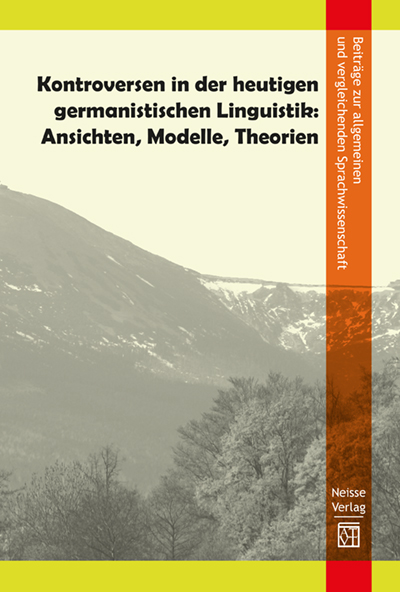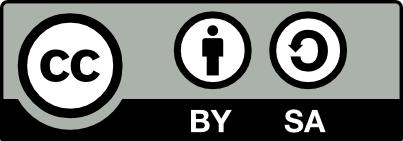
Beiträge zur allgemeinen und vergleichenden Sprachwissenschaft / Contributions to General and Comparative Linguistics
Numer 4 (2015): Kontroversen in der heutigen germanistischen Linguistik: Ansichten, Modelle, Theorien
Redakcja: Edyta Błachut, Adam Gołębiowski
Wie das Riesengebirge gesehen wurde oder einige Bemerkungen zur sprachlichen Gestaltung der schlesischen Reiseberichte des ausgehenden 18. Jahrhunderts. Mit einem Exkurs zum literarischen Bild der Schneekoppe / How the Giant Mountains were perceived or a few remarks on the linguistic form of Silesian journey accounts from the end of 18th century. With an excursus on the literary representations of Śnieżka
data publikacji online: 2021-05-01
s. 7–30
Słowa kluczowe: Johann Christoph Friedrich GutsMuths, travel literature, Giant Mountains – Karkonosze – Riesengebirge, Śnieżka – Schneekoppe, Johann Tobias Volkmar
The central theme of this draft is the linguistic form of Silesian journey accounts from the end of 18th century. The Giant Mountains (also known as the Riesengebirge or Karkonosze) are the highest mountain range in Silesia and Bohemia. Their topography, the history of their settlement and development as well as that of tourism in their region are briefly presented in the introductory part of this contribution. A particular focus is on the role of Śnieżka (Schneekoppe), a popular destination of excursions during the periodic linguistic conferences in Karpacz (Krummhübel). The draft also discusses the history of touristic development of this mountain and the descriptions of Śnieżka (Schneekoppe) in selected literary works from between the 18th and 20th centuries. In the section of text that follows selected descriptions of the Giant Mountains from the end of 18th century are recalled, contained either in academic works or in journey accounts. What was important here was to trace the works of Swiss authors which were imitated by the Silesian ones. The remaining part of the article deals with the language used to depict the nature. It is observed that the vocabulary derived from the history of antiquity, art and culture prevails, with rocks compared to antique ruins or architectural details and a waterfall described as a spectacle of nature.
Dichtung und Wahrheit sind nicht zu vermengen. Überlegungen zur linguistischen Perspektive auf die Poetik / Poetry and truth cannot be blended! Reflections on the linguistic perspective on poetics
data publikacji online: 2021-05-01
s. 31–41
Słowa kluczowe: poetry, linguistic, interpreting, linguistic perspective on poetics
The article tries to answer the question of how much linguistics can contribute to a better understanding of poetics. The author discusses differences in the scientific accuracy of both disciplines. The main argument is that linguistics can only examine that part of poetics, that can be described using strict scientific methods. Poetics as a theory which has to explain the essence of ‘poetry’ in fact interprets the texts in terms of aesthetics. This area cannot be examined via linguistic methods. To understand poetry, a special sensitivity, which linguists sometimes call ‘poetic ability’, is needed.
Nomina in Adverbialsyntagmen nach der Orthographiereform / Nouns in adverbial syntagmas after the German orthography reform
data publikacji online: 2021-05-01
s. 43–47
Słowa kluczowe: orthography, adverbial syntagmas, word classes, disjunction, adjunction
The paper deals with the consequences of the German orthography reform for the morphology and syntax on the example of phrases such as heute Morgen, gestern Abend etc. The question if orthography can take precedence over grammar will be discussed as well.
Zum Nominalstil in der Wissenschaftssprache / The nominal style in the academic writing
data publikacji online: 2021-05-01
s. 49–64
Słowa kluczowe: nominal style, academic writing, contrastive linguistics
This paper presents the features of the nominal style in German academic texts and it discusses the parameters of a comparative investigations of this phenomenon in German and Polish academic writing (by examples of philological texts). The aim of this study is to create theoretical foundations of corpus-based analysis of the nominal style in German and Polish texts. This paper begins by defining academic texts as a subject of linguistic investigation. The next section presents the typical features of the nominal style in German and Polish. Section 4 investigates the question, why the nominal style is criticized in the stylistics and in the next section the importance of the nominal style in academic texts is presented.
Diskriminierung der Geschlechter in und durch Sprache – Kontroversen um die feministische Linguistik am Beispiel Deutsch-Polnisch / Gender Discrimination in Language – Controversies over Feminist Linguistics on the Basis of German and Polish
data publikacji online: 2021-05-01
s. 65–84
Słowa kluczowe: Polish-German comparative analysis, feminist linguistics, language system, verbal communication, stilistics
The so called feminist trend appeared in the area of linguistic studies in the seventies of the twentieth century in Anglo-Saxon countries. Its most important objectives are: analyzing the characteristics of the language used by women, the description of the symptoms of women discrimination in different language systems and in verbal communication and the struggle for gender equality in the broadsense of linguistic context. The interpretation of some studies and some assumptions are controversial as they ignore the system differences between given languages and they overlook some crucial historic, cultural and stylistic aspects of verbal communication. The paper presents a brief review of the condition of the research into feminist linguistics based on the comparative analysis of German and Polish languages.
Zitieren und Verweisen in studentischen Arbeiten – Formen, Funktionen und Fallstricke / Quoting and referring in student's papers - forms, functions, perils
data publikacji online: 2021-05-01
s. 85–97
Słowa kluczowe: quoting, referring, student’s papers, students of German literary studies
The paper investigates the forms and functions of quoting and referring in a corpus of 25 papers written by students of German literary studies. Some difficulties the students encounter when incorporating the quotations into their papers are pointed out.
Inhaltsverzeichnisse in deutschen und polnischen Ratgebern für das Fach Akademisches Schreiben / Table of contents in German and Polish handbooks for academic writing
data publikacji online: 2021-05-01
s. 99–109
Słowa kluczowe: Table of content, German and Polish handbooks, academic writing, norm
Handbooks for academic writing are specific to a given language. However, one thing remains standard. No matter what language a piece of text is written in, a table of contents, whether it is placed at the beginning or at the end of a piece, will always be included in various kinds of academic writing. This article will compare Polish and German methods of constructing tables of content. The patterns for constructing a table of contents are outlined by norms and standards which are set and followed by each country. In Poland they are known as PN (Polish Norm) and in Germany as DIN (Deutsche Industrie Norm-German Norm). International norms are known as ISO (International Organization for Standarization) and then in Europe as EN (European Norm). In general, norms set for constructing table of contents do not illustrate a particular or set way of doing so. In this paper 50 German and 50 Polish table of contents from handbooks for academic writing will be compared, in order to analyse what specific differences appear between these two different cultures and if the chosen norm has in any way benefited the author.
Gesprächsschritt und Gesprächssequenz – Probleme der Gliederung von direkten Alltagsgesprächen in Phasenmodellen / Turn and Sequence – Problems of the Organization of Ordinary Direct Conversations in the Phase-Models
data publikacji online: 2021-05-01
s. 111–123
Słowa kluczowe: conditional relevance, turn, sequence, conventionalism, illocution
One of the main problems in the linguistic analysis of conversations constitutes the determination of their components (which can be identified formally, semantically and/or functionally), the sequence of this components and hierarchical relations between them. Generally one can distinguish two leading approaches: one based on the ethnomethodology, and one on the speech act theory. The latter approach is founded upon the conventionalism J. L. Austin’s speech act theory, which levels differences between institutional and everyday (direct) conversations and determines considerably the definitions of the basic categories of conversational analysis. The aim of the present article is to point out some problematic issues, which are entailed by the conventionalist perspective and which concern two basic conversation units – turn and sequence.
Expositionsmittel des Deutschen am Beispiel von Parlamentsreden / The means of textual emphasis in German on the example of parliamentary speeches
data publikacji online: 2021-05-01
s. 125–139
Słowa kluczowe: emphasis, lexemes, phrases, German syntax and pragmatic, parliamentary speech
The article deals with lexemes and lexicalized phrases used in German to emphasise such elements in the text as a word, a phrase, a clause or the whole utterance. The analysed data consists of extracts from parliamentary speeches in Bundestag. The article aims mainly at examining emphasizing lexemes and phrases from the syntactic and pragmatic perspectives in order to elaborate their preliminary subclassification.
Funktionen pragmatischer Phraseologismen in Rundfunkinterviews / Functions of pragmatic phrasemes in radio interviews
data publikacji online: 2021-05-01
s. 141–152
Słowa kluczowe: pragmatic phrasemes, conversational formulae, interviews
A certain kind of routine and fixed phrases such as pragmatic phrasemes are characteristic for everyday oral communication. They may facilitate fulfilling specific pragmatic functions such as opening and closing the conversation or changing the subject in order to make the communication easier. The paper is primarily concerned with pragmatic phrasemes and precisely with conversational formulae. The article presents theoretical basis and classification of the chosen phrasemes. Secondly, the selected formulae have been analyzed for their pragmatic functions in radio interviews.
Inkorporierte Direktionale / Incorporated directional elements
data publikacji online: 2021-05-01
s. 153–161
Słowa kluczowe: directional element, adverb, phrasal verb, incorporation
This article characterizes constructions such as “durch den Wald durch”. Thy are semantic directional elements. In the literature different answers are proposed as to the meanings of these constructions, as well as their semantic relevance. Grammars treat these constructions as circumposition, postposition, adverb or affix. The answer is important for didactics.
Die dänische Interessent-Konstruktion mit „få“ und ihre Äquivalente im Deutschen / The Danisch (germ.) Interresent-construction with “få” and its equivalents in German
data publikacji online: 2021-05-01
s. 163–167
Słowa kluczowe: Danish, German, the auxiliary verb få, (germ.) Interessent-construction
The aim of the following paper is to show the ways of expressing the Danish Interresent-construction with “få”. Another important aim of the article is to show the differences between the Interessent-construction and two other Danish constructions with “få” as an auxiliary verb. These discrepancies are only of semantic nature and affect the semantic functions of subjects.
Deutsch und Polnisch als Managementsprache – Barrieren und Erleichterungen in der Kommunikation / German and Polish as business languages – barriers and facilitators of communication
data publikacji online: 2021-05-01
s. 169–181
Słowa kluczowe: language, communication, specialised communication, specialised texts
Currently, six to seven thousand languages are used all over the world (Slavic, Baltic, Germanic, Romanic, Hellenic etc.). Within a given language we can distinguish different variants of the so-called general language, which we need to communicate (it is enough to know about 1500 words, phrases to communicate in communication situations in a given language), as well as specialised vocabulary characteristic of a given sphere of life. The main task of specialised language is to organise, define and classify the described reality. Specialised languages do not form separate language systems, because to describe specialised knowledge we also use lexical resources of general language. Texts containing technical vocabulary are written in a different style than literary texts and general-knowledge books. You need to be a specialist in a given field, to understand specialised vocabulary. The article aims at showing the most important elements making up effective interpersonal communication with the help of German and Polish language of business.
Deutsche Lehnwörter im schlesischen Dialekt und in der polnischen Sprache. Eine quantitative und qualitative Untersuchung anhand des Lexikons der deutschen Lehnwörter in der polnischen Sprache / German loan words in the Silesian dialect and in the Polish language. A quantitative and qualitative analysis on the basis of lexicon of the German loan words in the Polish language
data publikacji online: 2021-05-01
s. 183–209
Słowa kluczowe: Silesian dialect, Polisch language, German language, loan words
The article entitled “German loan words in the Silesian dialect and in the Polish language. A quantitative and qualitative analysis on the basis of lexicon of the German loan words in the Polish language” analyses the lexicon of the German loan words in the Polish language in terms of the influence of German loan words in the Polish language on the Silesian dialect (Silesian dialect of the Opolskie Voivodeship in the Krapkowice and Głogówek district). The first table presents words from the lexicon which are more frequently used in the Silesian dialect than in the Polish language and whose German origin is noticeable. The second table juxtaposes words which have other equivalents or different meanings in the Silesian dialect. The third table lists the remaining words which despite their German origin either are absent from the Silesian dialect or they have been assimilated into the Polish language and they are not perceived as words of German origin.
Der polenweite Wettbewerb zum schönsten deutschen Wort / The nationwide ‘the most beautiful German word’ contest in Poland
data publikacji online: 2021-05-01
s. 211–228
Słowa kluczowe: the most beautiful German word, contest in Poland
The article is about the nationwide ‘the most beautiful German word’ contest in Poland. The contest was organised in summer 2015 by the author of this article, in her role as the Lektor of the German Academic Exchange Service (DAAD) at the German Department of the University of Wrocław, in collaboration with the cultural manager of the DSKG. All speakers of German as a foreign language in Poland were invited to participate in this contest by sending a word they personally considered the most beautiful, along with a short explanation of their choice. More than 200 wonderful texts were sent. This article gives an overview over the organisation of the contest and the corpus of all the texts which have been compiled in a book.

